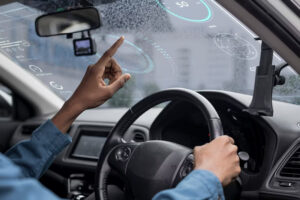
Introduction: The automotive industry is undergoing a profound transformation, marked by the rise of electric vehicles (EVs) and the integration of advanced connectivity technologies. As the world pivots towards sustainable transportation solutions and smart mobility, automakers are recalibrating their strategies to remain competitive. This article explores how the automotive sector is navigating the shift towards electrification and connectivity, reshaping the industry’s future.
- Electrification Takes Center Stage: Electric vehicles are at the forefront of the automotive revolution. Automakers are making significant investments in research and development to produce EVs that combine performance, range, and affordability. The shift towards EVs is driven by regulatory pressures, consumer demand for sustainable options, and advancements in battery technology.
- Charging Infrastructure Expansion: With the rise of EVs, the need for a robust charging infrastructure has become paramount. Automotive manufacturers, in collaboration with governments and private entities, are investing in the development of a widespread and accessible charging network to alleviate “range anxiety” and support EV adoption.
- Connectivity and Smart Mobility: The integration of connectivity features, such as advanced driver assistance systems (ADAS) and autonomous driving capabilities, is redefining the driving experience. Cars are evolving into connected platforms that enable real-time data exchange, enhance safety, and facilitate personalized services, like navigation and remote vehicle control.
- Collaborative Industry Partnerships: Automakers are increasingly forming partnerships with technology companies, startups, and research institutions to leverage expertise in areas like AI, software development, and battery technology. These collaborations accelerate innovation and promote cross-industry solutions.
- Supply Chain Resilience and Sustainability: Global supply chain disruptions have underscored the importance of building resilient and sustainable supply networks. Automotive companies are reevaluating their sourcing strategies, diversifying suppliers, and adopting environmentally friendly materials and manufacturing processes.
- Transition to Mobility Services: The automotive industry is evolving from a product-centric approach to a service-centric one. Automakers are investing in mobility services, such as ride-sharing, car subscription models, and autonomous taxi fleets, to address changing consumer preferences and urban mobility challenges.
- Regulatory and Policy Impacts: Government regulations and policies play a crucial role in shaping the automotive landscape. Many countries are implementing stricter emission standards and offering incentives for EV adoption, prompting automakers to align their strategies with evolving regulations.
- Consumer Awareness and Education: As the industry transforms, educating consumers about the benefits of electric vehicles and new technologies becomes essential. Automakers are investing in marketing campaigns and public awareness initiatives to dispel myths, promote sustainability, and boost consumer confidence in EVs.
Conclusion: The automotive industry is embracing electrification and connectivity as catalysts for change. With electric vehicles, advanced connectivity features, and collaborative partnerships, automakers are propelling the industry into a new era of sustainability and innovation. As consumer preferences shift and technology evolves, automakers that effectively navigate these shifts will be well-positioned to shape the future of transportation.






